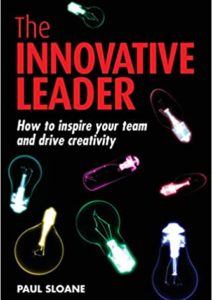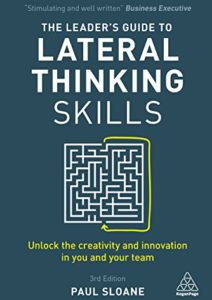Contrary to conventional thinking, lateral thinking means looking at the problem from a different perspective. Thus, in this Expert Insight Interview, Paul Sloane discusses lateral thinking for salespeople. Paul Sloane is an expert, consultant, author, and speaker on innovation, creativity, and lateral thinking.
The interview discusses:
- Importance of lateral thinking in sales
- Steps to lateral thinking
- Keeping on asking questions
Why is it Important?
So many things have changed recently, including consumer behavior. Customers are more cautious and hesitant. Salespeople’s role has changed as well, and now, they need to guide customers who are overwhelmed with information and choices. But, to provide guidance, salespeople need to establish professional trust and earn respect from their customers.
Steps to Lateral Thinking
Firstly, ask yourself whether you know your target market and your clients’ needs? It is important to remember that customers’ needs change dynamically. Last year’s customer needs are not the same as this year, and they will be different next year as well. Thus, you have to recheck that you have an accurate understanding of the customers’ needs. Next, ask yourself what assumptions you make and write them down. Then, ask yourself what if you are wrong, and what if the truth is the complete opposite? Challenging your primary assumption forces you to take the opposite direction, which sometimes can lead to creating an entirely new market.
Furthermore, think of the new methods that you can try for things that you do regularly. Trying new ways is bold, and even though many of them will not work, some will work and lead to developing a new method. Besides, innovation usually comes from the number of failed experiments at first.
Keep Asking Questions
The crucial thing to remember is to keep asking questions until you uncover a customer’s fundamental issue. For example, a good salesperson establishes a report with the client, asks questions to reveal the needs, introduces the product that solves the customer’s problem, and successfully closes a deal. However, an outstanding salesperson establishes a report with a client, asks questions to identify the problem, and then asks even more questions. That way salesperson understands the client’s issue more clearly and can propose a solution that has a much higher value to the client.
Hyundai is an excellent example of a company that managed to double its car sales during the 2008/2009 recession. By investigating deeper than others, Hyundai discovered that the main reason why people were not buying cars was that they were afraid of losing jobs while still repaying them. Thus, Hyundai offered to carry the risk enabling everyone who gets redundant at work to return it. Hence, intentionally taking a different look at things generates a creative and innovative solution to the problem.
Our Host
John is the Amazon bestselling author of Winning the Battle for Sales: Lessons on Closing Every Deal from the World’s Greatest Military Victories and Social Upheaval: How to Win at Social Selling. A globally acknowledged Sales & Marketing thought leader, speaker, and strategist, he has conducted over 1500 video interviews of thought leaders for Sales POP! online sales magazine & YouTube Channel and for audio podcast channels where Sales POP! is rated in the top 2% of most popular shows out of 3,320,580 podcasts globally, ranked by Listen Score. He is CSMO at Pipeliner CRM. In his spare time, John is an avid Martial Artist.














Comments